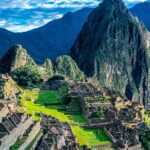Travel Guide for Lares Trek to Machu Picchu
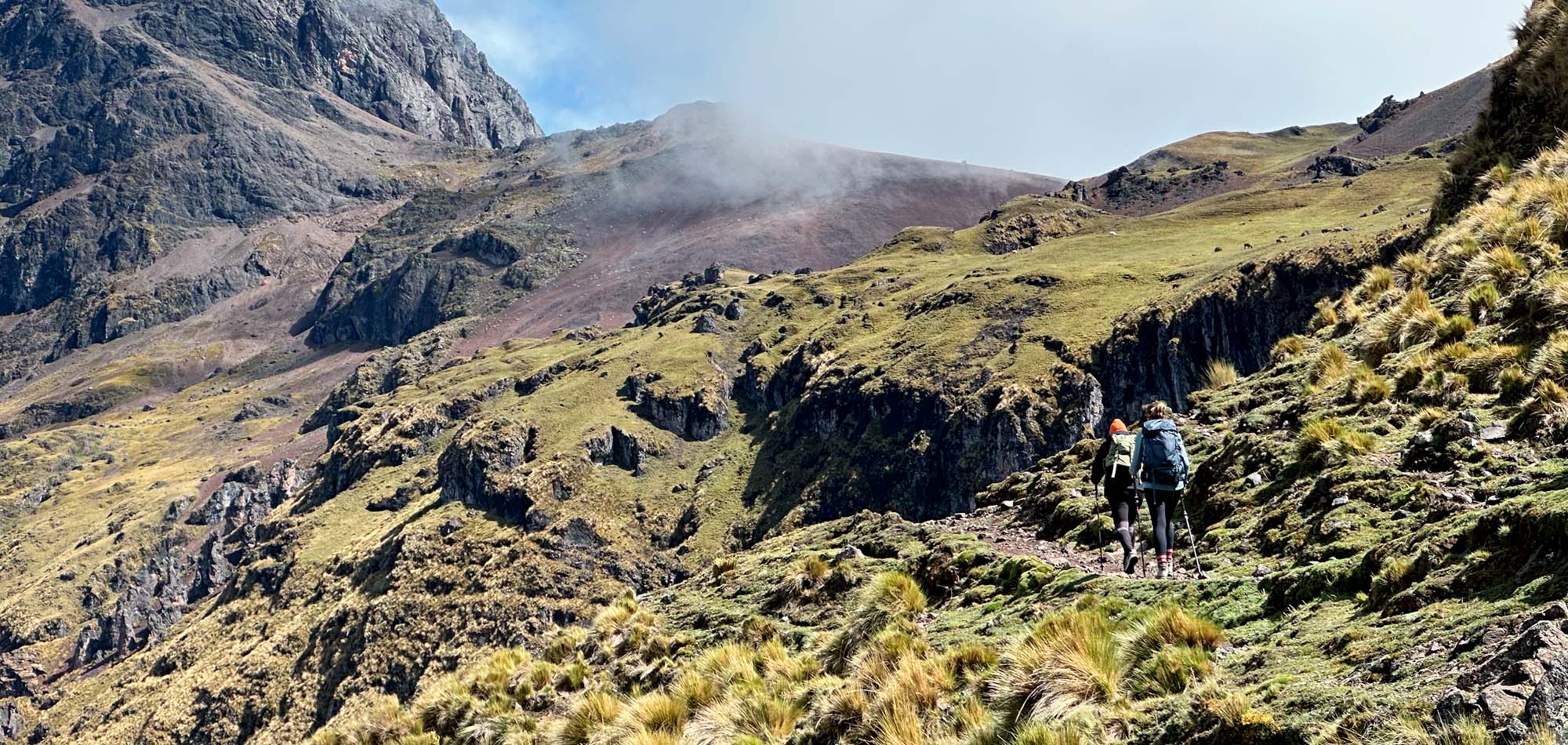
The Lares trek is one of many routes leading to Machu Picchu.
This trek is particularly rich in cultural experiences. I’ve spent quite a bit of time living in Cusco and the Sacred Valley, and highly recommend the Lares trek to those looking to immerse themselves in the local culture.
In this article, I have provided all the information you need for an amazing Lares trek experience. This includes a detailed overview of routes and itinerary options (yes, there are more than one Lares route).
You will also find sections on acclimatisation, costs, and guidance on what to pack and when to book your trek. I haven’t left anything out!
Lares Trek to Machu Picchu – The Ultimate Cultural Trek
Lares Trail – An Overview
The Lares trek is an off the beaten track alternative to the Inca Trail. It begins near the town of Lares, from which it gets its name. This small town is 40 miles (64.4 kilometres) north of Cusco and 35 miles (56.3 kilometres) southeast of Machu Picchu. Lares is situated at an impressive altitude of 3,200m / 10,498 ft.
The trek itself lies in the Lares Valley. This is east of the Urubamba Mountain range and traverses part of the Sacred Valley.
You may also like:
In terms of route itinerary, there are in fact a number of variations on the Lares trek with most trails ending at Ollantaytambo.
From here, trekkers can catch a train to Aguas Calientes to visit Machu Picchu or return to Cusco. I will discuss each Lares trek route variation in more detail in this article.
To give you a better idea of the Lares trekk and its various checkpoints, check out our handy route map below.
Is The Lares Trek Difficult?
There are different versions of the Lares trek, each one presenting its own challenges. You do need to have some fitness to be able to trek the high passes on these trails.
Depending on your preferences and overall levels of fitness, there are five different Lares routes with varying checkpoints which you can choose from:
- Route 1: Lares to Patacancha (‘Weavers Way’)
- Route 2: Quishuarani to Patacancha
- Route 3: Quishuarani to Yanahuara
- Route 4: Huaran to Yanahuara
- Route 5: Huaran to Lares – Best itinerary and its off the beaten track!
These Lares Trek routes are actually shorter than other multi-day hikes near Cusco. Lares to Patacancha (33 kilometres / 20.5 miles) is spread over 3 days. This is generally considered a ‘moderate trek’. Routes 2 and 5 are also considered moderate in difficulty.
On the other hand, Routes 3 and 4 are longer and more rarely taken. Route 4 is particularly long and rated as strenuous. These are more enjoyable though if you are relatively fit and hike often.
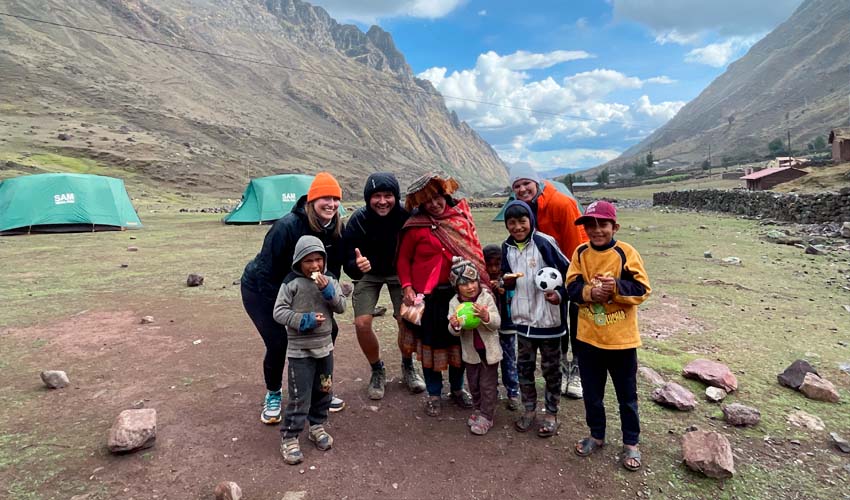
Does The Lares Trek Go To Machu Picchu?
Yes, The trek can be completed as a standalone 2-3 day trail. It can also be incorporated with a visit to Machu Picchu, thereby extending the tour by 1 or 2 days.
The latter option is fast becoming a popular itinerary for trekkers. This is due to permit limits on the Classic Inca Trail to Machu Picchu.
Permits are not required for the Lares trek. This means that you can arrive in Cusco and, depending on the season, be on the trail within a day or two but better to book in advance becuase the entrence tickets to Machu Picchu are limited.
However, you will still need to book your Machu Picchu and train tickets to Aguas Calientes as early as possible.
Why Choose the Lares Trek?
There are several factors that make this trek a great alternative to the 4-day Inca Trail.
- Firstly, and most importantly, for some, the Lares Trail is a lot quieter than the Inca Trail. You see fewer hikers along the Lares, although this trail gets more popular by the year.
- Secondly, the route is arguably easier than the Inca Trail. This is mostly because you won’t have to deal with as many steps.
- The Lares trek provides a true Andean cultural experience. The Lares Valley is home to traditional Andean communities, little of which has changed in the last 500 years.
- You will see local weavers and farmers in colourful traditional clothing. Depending on your tour, you might get a chance to watch or partake in some weaving activities.
- The area is famous for its homemade textiles. If you want to bring an authentic piece of Peru back home with you, then take extra soles. You can pick up a bargain here whilst making it a local weavers’ day!
Lares Route Options and Maps
There are a number of Lares trek route itineraries to Machu Picchu, each offering a slightly different flavor of the region. I have set out 5 route variations below.
The first two are the most common Lares treks extending to Machu Picchu. All of the trails below do not require permits. They can be completed as standalone treks without visiting Machu Picchu.
Route 1: Lares to Patacancha (aka “Weavers Way)
This is one of the most popular Lares trek variations to Machu Picchu. This is mainly because it is the shortest (~33 kilometres / 20.5 miles) and easiest. There is only one big pass – Ipsayjasa – situated at 4,450m (14,600 ft).
The route takes three days of trekking and one extra day to visit Machu Picchu. Trekkers are taken through two interesting weaving communities located at Huacahuasi (3,750m / 12,303 ft) and Patacancha (3,700m / 12,139ft).
Here is the route map above and itinerary below:
Day 1: Cusco – Calca – Lares Thermal Springs – Huacahuasi
Trekkers leave Cusco (3,399m / 11,151 ft) early on the first morning, typically around 06:00. You will drive for 2 hours to the small town of Calca (2,928m / 9,606 ft).
Some groups stop here for a break and potentially get breakfast. You will also be able to stock up on snacks and water in Calca.
From here, the drive continues north for another 3 hours to the town of Lares. You should have time for a quick dip in the thermal springs. Afterwards, you commence the 5–6-hour (~12km / 7.5miles) trek to the first campsite, Huacahuasi.
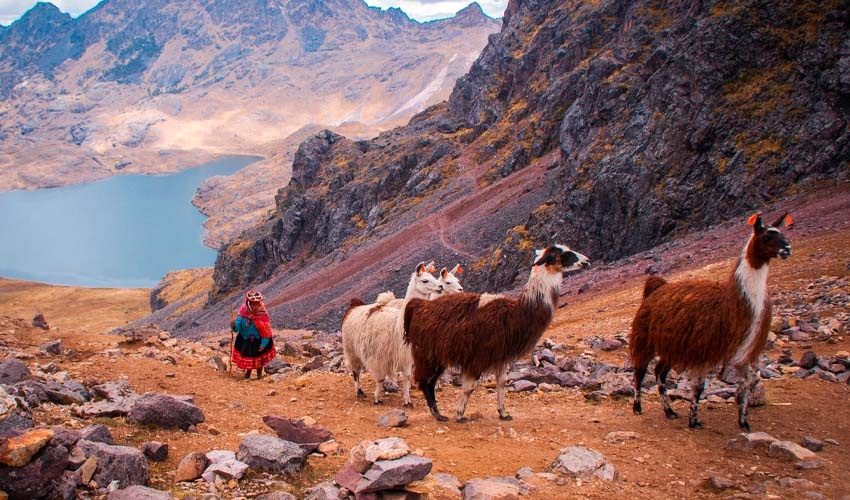
Day 2: Huacahuasi – Ipsaycocha Lake
Huacahuasi (Huacawasi) is a traditional weaving community. Trekkers usually spend the morning here watching weaving in action. The local villages are known for their beautiful multi-colored ponchos. These are much better quality than what you will find at Cusco markets.
The trek on the second day is a short, but a tough one. It begins with a climb up and over the Ipsayjasa Pass. This is the highest point on the Lares Trek. Reaching the top takes 2-3 hours. Coming down is much quicker (just over an hour) to the campsite at Ipsayjasa Lake.
Total trekking distance: ±9km / 5.6 miles with a walking time of 3-5 hours.
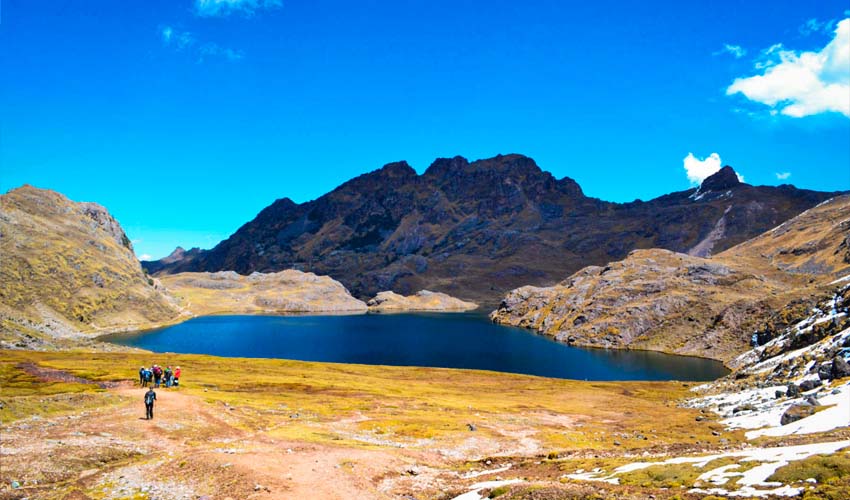
Day 3: Ipsaycocha Lake – Patacancha – Huilloc – Ollantaytambo – Aguas Calientes
The third day is all downhill! From Ipsaycocha Lake, the route descends for 2-3 hours. It is an easy walk to the Quechua weaving community in Patacancha.
The trail then turns south and continues downhill. You will reach another traditional Quechua village called Huilloc (sometimes written ‘Willoq’) situated at 3,962m / 13,000 ft. You will see many locals wearing traditional outfits in this quaint village.
The trail concludes in Huilloc. From here, most tour operators organize land transport to Ollantaytambo (2,792m / 9,160ft). You will then take a train to Aguas Calientes (2,040m / 6,693ft) – the town that sits below Machu Picchu and fondly nicknamed ‘Machu Picchu Town’.
Please Note: Some companies have a cheaper option to go to Hidroelectrica by car. The drive is much longer, and you will then need to walk 10 kilometres / 6.2 miles alongside the railway line to Aguas Calientes.

Day 4: Aguas Calientes – Machu Picchu – Cusco
After a comfortable night in a hotel, you will wake early to get one of the first buses up to Machu Picchu.
Please Note: The first buses depart around 05:30, but in the peak season (May-September), queuing can start before 05:00.
Your trekking company would most likely organize a 2–3-hour tour around Machu Picchu.
If you still have the energy and aren’t afraid of heights, it is worth climbing Huayna Picchu. Inti Punku (the Sun Gate) situated at 2,730m / 8,956 ft is also good to see. Both provide great birds-eye views of Machu Picchu.
Please Note: You will need to book both these additional sights anywhere from 6-12 months in advance.
Your train from Aguas Calientes to Cusco will likely be mid-afternoon. It takes about 30 minutes to return by bus from Machu Picchu to Aguas Calientes. Factor in time spent queuing for a bus to give yourself enough time to catch your train back to your accommodation.

Route 2: Quishuarani to Patacancha
This Lares trek route variation is the second most popular after ‘Weavers Way’. The route is a little longer than the first (±39 km / 24.2 mi), but of similar difficulty. Make peace with the fact that you will need to contend with two big passes (Ipsayjasa and Huillquijasa) on this route!
Day 1: Cusco – Calca – Quishuarani – Cuncani
You will leave early on day 1 and drive from Cusco to Calca. Most tours stop for breakfast in Calca. From here, you continue on to Quishuarani (3,700m / 12,139 ft), arriving around 11:00.
The trek starts with a gradual ascent. The trail gets steeper as you approach the first pass, Huilquijasa (4,200m / 13,780 ft). Views of the valley and lakes below are great from this height.
It takes about 3-4 hours followed by another 2-3 hours descent to the first camp, Cuncani (3,750m / 12,303 ft).
Total trekking distance: ±12km / 7.5 miles with 5-7 hours of walking.
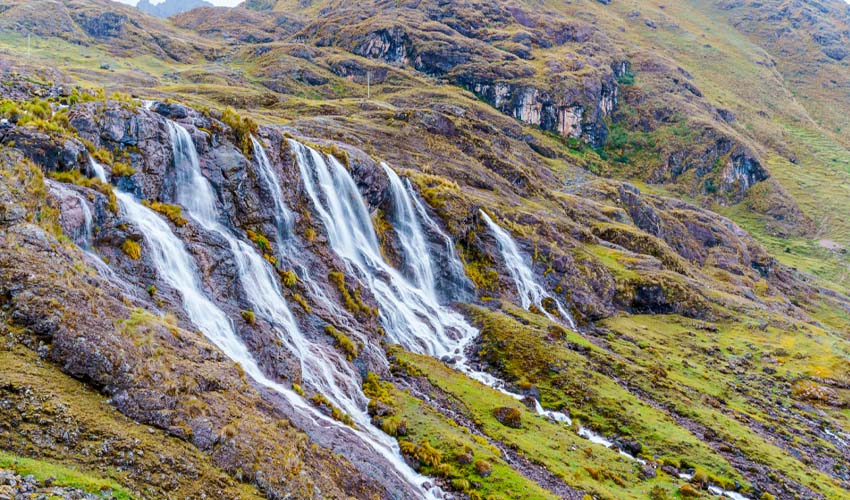
Day 2: Cuncani – Huacahuasi – Ipsaycocha Lake
Day 2 starts early and is the toughest on the route. From Cuncani, the route gradually descends into the Chancachaca Valley (3,600m / 11,181 ft). You will head down for about 2-3 hours before rising again to the town of Huacahuasi (sometimes spelled ‘Huacawasi’) at 3750m (12,303 ft).
This town is famous for its weavers. You will spend some time here eating lunch and watching the locals at work. The route continues up and over the Ipsayjasa Pass (4,450m / 14,600ft). After conquering Ipsayjasa, you will descend to camp at Ipsaycocha Lake.
Day 3 and Day 4 follow the same route as the Weavers Way (Route 1). See more info above.
Total trekking distance: ±15km / 9.3 miles with 6-9 hours of walking.
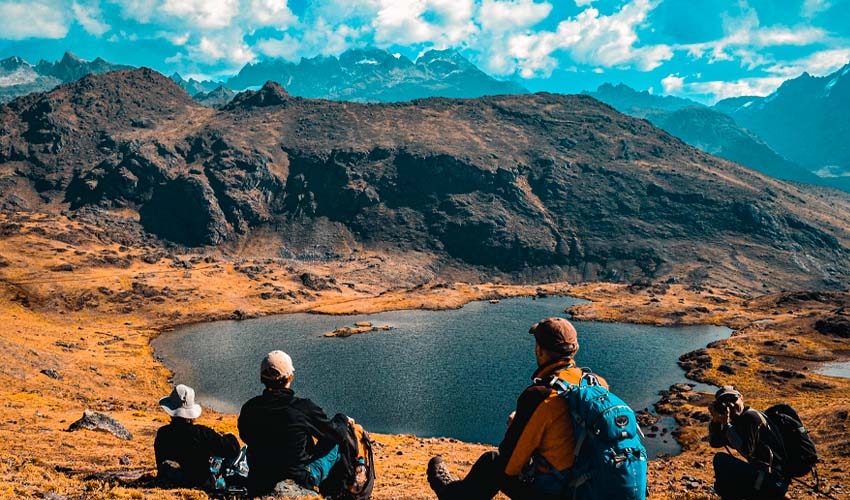
Route 3: Quishuarani to Yanahuara
The Quishuarani to Yanahuara trek has the same first and last day as Route 2. This option is better suited for the more experienced trekkers as it is longer (±45km / 28mi) and more challenging. There are three passes over 4,200m (13,780ft) that need to be traversed.
The route is one of the least popular Lares trek variations which is partially due to its difficulty but mainly because of the endpoint. Yanahuara (2,873m / 9,426 ft) is a good bus journey away from Ollantaytambo, from which you can take a train to Aguas Calientes.
If you are a seasoned hiker and have already visited Machu Picchu, Route 3 may be a good option.
Route 4: Huaran to Yanahuara
Route 4 is an unusual and long 6-day Lares trek, beginning from Huaran in the Sacred Valley. The hike goes up to Quishurani (3,700m / 12,139ft) via the Pachacutec Pass (4,200m / 13,780 ft). It then winds back around and down to Yanahuara (2,873m / 9,426ft). This is by far the least used route and is a tough challenge for even the most seasoned hiker.
Route 5: Huaran to Lares
This route is generally done by trekkers who have already been to Machu Picchu. Route 5 is for people looking for an authentic Andean trekking experience, providing lots of opportunities to interact with locals.
Starting in the Sacred Valley at Huaran (2,885m / 9465ft), the route follows a 4–5-day itinerary. It goes up and over the Pachacutec Pass (4,200m / 13,780ft) to Quishuarani (3,700m / 12,139ft).
It then heads west over Huilquijasa Pass (4,200m / 13,780ft) to Cuncani (3,750m / 12,303ft). The trek continues north up to the small town of Vilcabamba and then onto Lares from there.
Trekkers can then take a bus back to Cusco. If you have yet to see Machu Picchu, you can take a bus to Ollantaytambo (2,792m / 9,160 ft) and train to Aguas Calientes (2,040m / 6,693 ft) to reach Machu Picchu (2,430m / 7,972 ft).
For more info on various checkpoint elevations during the five Lares trek routes, check out our handy altitude profile below.
Best Time For A Lares Trek to Machu Picchu
The best time to do the Lares Trek is during the dry season (May-September). This is the busiest trekking time in the region, particularly on the Classic Inca Trail.
The Lares Trail is the third most popular trek to Machu Picchu. It ranks after the Classic Inca (both the 4-day and short Inca trail) and Salkantay treks. At the height of the peak season, the trail can be quite busy though. That being said, there are so many variations of Lares Trail routes that it never feels overcrowded.
During the dry season’s shoulder months (April and October), the Lares Trails are particularly quiet and the weather during this time is often very pleasant.
November is touch-and-go in terms of trekking. The likelihood of encountering rain is relatively high.
I would suggest avoiding December through March as rain makes the Lares trails really unpleasant. Visibility is also low due to heavy morning and late afternoon fog, which can lead to injuries.
For the most part, temperatures throughout the year are moderate in this part of Peru. Tourists can expect temperatures in the high twenties (Celsius) during the day. Nights and early mornings range from cool to very cold, so it’s important to pack and wear layered clothing (see my suggested packing list below).
The Andes is characterized by distinct microclimates. Rain is possible throughout the year, so you should always take rain gear with you!
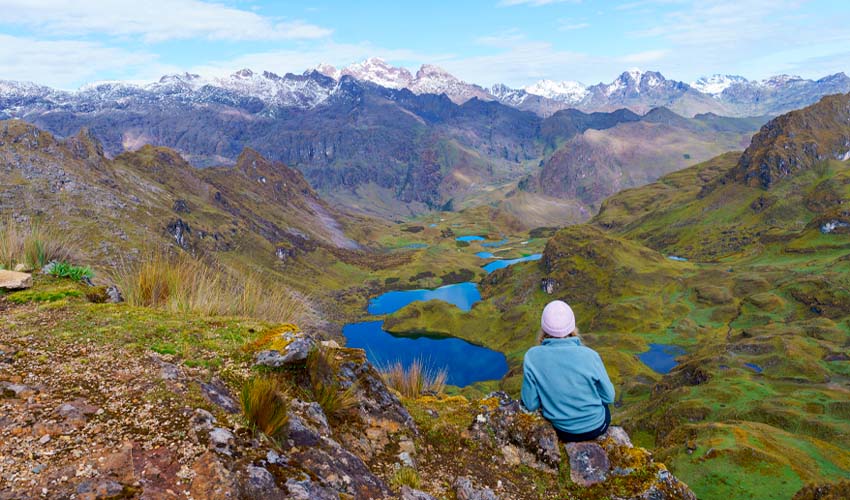
Can You Hike The Lares Trek Without A Guide?
- It is possible to do the Lares Trekk unguided. As discussed, there are different route options. You may want to choose one of the more common pathways because these trails are well-trodden and easier to follow.
- It is also better to avoid trekking the Lares without a guide in winter. During this time, snow and rain can wipe away all traces of trails, which can be a navigational hazard.
- The local farmers and herdsmen are friendly but do not speak English. It will be much easier to do this trek if you can speak basic Spanish.
- Watch out for dogs along the way too. Rural dogs can be much more territorial than those you find around Peru’s cities. As tempting as it is, it’s better not to approach them.
Please Note: The below prices include transport and tickets to Machu Picchu.
What is the price for the Lares Trek to Machu Picchu?
The cost of hiking the Lares Trail varies between companies. Generally, you can expect to pay the following:
| Trek Type | Number Of Days | Cost |
| Lares Trek with a good local company | 4-6 | ±$600 – $750 |
| Lares Trek with an international tour agency (All-inclusive with hotel-stays in Cusco) | 3-6 | ±$800 – $1000 |
Acclimatization and Altitude Sickness on the Lares Trek
Altitude is a challenge you will face on the Lares Trek. On some route variations, you will need to deal with three high altitude passes that are over 4,200 meters (13,780 feet). Depending on your route, the highest point is Sicllakasa Pass situated at 4,830m / 15,846 ft).
Lares Trek Packing List
The equipment packing list for a Lares Trek is essentially the same as an Inca Trail gear list. If you are trekking with a company, you will likely have a weight limit of 7kg (15.4lb). This includes 2 kilograms (4.4lb) for your sleeping bag.
Layered clothing is a must for the Lares Trek. Be sure to pack at least one pair of leggings and two long-sleeve tops for cold nights and mornings. Thermal wear is a big advantage for this trek.
You will also need to take waterproof clothing, irrelevant of the time of year. If you don’t have a rain jacket, you can buy a plastic poncho in Cusco before you set off.
Do You Need to Train for The Lares Trek?
Once again, how much preparation you need depends on which Lares Trek you are doing. The shorter trails (routes 1, 2, and 5) only require a basic fitness level. Routes 3 and 4 are much longer. You will need to be hiking fit for these options.
No matter which routes you choose, some training will make the trek more enjoyable. It is a good idea to do some walking, running, or swimming 3-5 times a week in the months building up to your trek. This will help build your cardiovascular endurance.
We have written some good guides on getting fit for multi-day hikes. Those on getting ready for the trek to Machu Picchu and training for the Inca Trail are both applicable to the Lares Trek.
Trekking Insurance for the Lares Trek
Insurance for your Lares trek to Machu Picchu is a must. Many operators will need you to have travel insurance for your trek.
The Lares Trek includes high passes (the Condor Pass is 4, 300m / 14,108ft). You will need to make sure your insurance covers you for high-altitude hiking. When it comes to travel insurance, it is always better to have it and not need it than not have it in an emergency.

